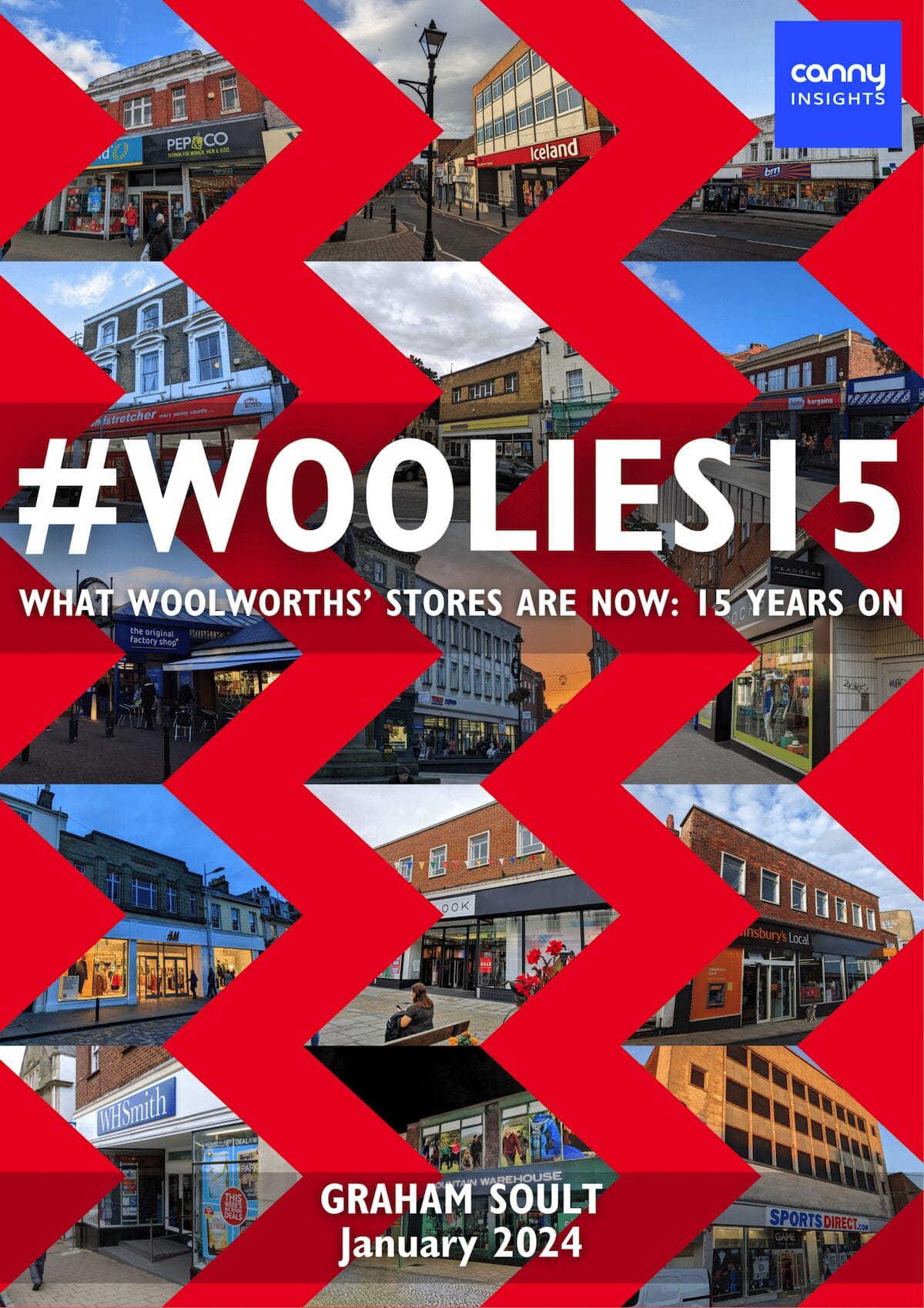Positive trends evident on anniversary of Woolworths’ closure.

© Canny Insights
Fifteen years on from the failure of the iconic retailer Woolworths the bulk of its former stores are actively in use, which highlights that on the anniversary of its shock departure from hundreds of UK high streets the country’s physical retail landscape is healthier than is often reported, according to a new report.
The ‘#Woolies15 – What Woolworths’ Stores are now: 15 years on’ report from Canny Insights represents a barometer of the state of the high street and highlights broad trends across the retail sector.
It reveals that as many as 83% of the 807 former variety store outlets remain fully or partially active by other retailers. Around 40% house other variety store operators similar to Woolworths including Poundland, B&M and Poundstretcher.
Among the remainder: around 20% are now operated by convenience stores such as Iceland, Tesco and Sainsbury’s; 11% house fashion outlets – down from 15% in 2019; 13% are run by independents – a large gain from the 9% in 2019; and 13% of the former stores have been subdivided to accommodate more than one retail occupant.
Graham Soult, founder of Canny Insights, says: “Tracking the changes that have happened in these stores over the last 15 years is like holding up a magnifying glass to the high street as a whole. It is remarkable that more than four fifths of ex-Woolworths sites still remain in active retail use, some 15 years later.”
On the downside, around 9% of the sites are currently fully vacant, with all but one of those after previously being filled at least once in the past 15 years. Although this is a rise on the 5% vacant sites recorded in 2019 and 3% in 2014 (on the tenth and fifth anniversaries of the closure) it is well below the overall vacancy rate for UK high streets – which stands at almost 14%.
The current picture would look even rosier were it not for the fact a significant number of the vacant sites are a result of the recent collapses of two large retailers M&Co and Wilko who were previously utilising 46 former Woolworths stores. However, The Range, which recently bought Wilko is likely to take on some of the failed retailer’s former stores that were housed in Woolworths buildings, which reflects the ongoing churn that has taken place across the last 15 years.
This is highlighted in the report by the finding that 52% of the locations now have different occupants to those who originally took on the stores in the wake of Woolworths’ failure. This compares with 36% in 2019, which suggests an acceleration in the churn rates on UK high streets.
This can be seen in the activity of Poundland that has traded from, and then exited, 44 former Woolworth locations – up from 18 in 2019. The fact it has been acquiring other ex-Woolworth stores only recently is indicative of the broad trend of retailers to relocate to more suitable positions on the high street and into more relevant-sized stores.
There has also been a trend for non-retail use of the sites, with a doubling to 6% of the number of units moving on from their original retail use. Since 2019 the report finds that non-retail use has become increasingly diverse – especially around leisure and gaming.
Although restaurants, bars and pubs account for only 2% of the sites this has the potential to change as bar operator Loungers now occupies five sites, up from two in 2019, and is on the expansion trail. It joins pub chain JD Wetherspoon that also operates from five former Woolworths stores. There has also been growth in the number of sites used as gyms, offices and a notable increase in the number of the stores being developed for housing.
The level of activity paints a positive picture, according to Soult, who explains: “The evident growing trend for much more diverse high-street uses – including leisure, healthcare, education, and certainly, housing – is fascinating. Commentators have often talked about the idea of modern high streets as ‘community hubs’ and now those observations are becoming reality.”
Although retail will continue to be a major part of the offer on high streets in towns and cities across the UK, predicts Soult, this will be alongside a more creative use of some of the underused buildings in these locations. “The boring, mono-use clone town may be a thing of the past – but local, distinctive, diverse high streets are much more alive than we give them credit for,” he suggests.
